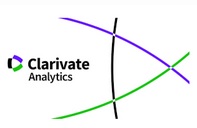SELF-DETERMINED MOTIVATION AND DISPOSITIONAL FLOW IN SPORT
Abstract
This paper is an attempt to establish relationships among the different motivation types stated by Self-determination Theory (Deci & Ryan, 1980, 1985, 1991), and dispositional flow, as well as to analyze ex-isting differences depending on several socio-demographic variables. A sample of 413 athletes of different sports, ranging in age from 12 to 16, who responded Spanish versions of the SMS and the DFS, was used for it. The results reveal that dispositional flow is predicted by intrinsic and ex-trinsic motivation, showing athletes with high SDI higher dispositional flow than athletes with low SDI. Also, it is observed higher intrinsic and extrinsic motivation in youngest athletes, higher amotivation in boys and in athletes whose parents don't practice sport, higher intrinsic and extrin-sic motivation and lower amotivation in athletes that practice more days, and higher intrinsic motivation in those that train more minutes.Downloads
Download data is not yet available.
Metrics
Views/Downloads
-
Abstract4194
-
PDF (Español (España))3444
Moreno Murcia, J. A., Cervelló Gimeno, E., & González Cutre Coll, D. (2006). SELF-DETERMINED MOTIVATION AND DISPOSITIONAL FLOW IN SPORT. Anales De Psicología Annals of Psychology, 22(2), 310–317. Retrieved from https://revistas.um.es/analesps/article/view/23291
Sport Psychology
About Copyright and Licensing, more details here.










